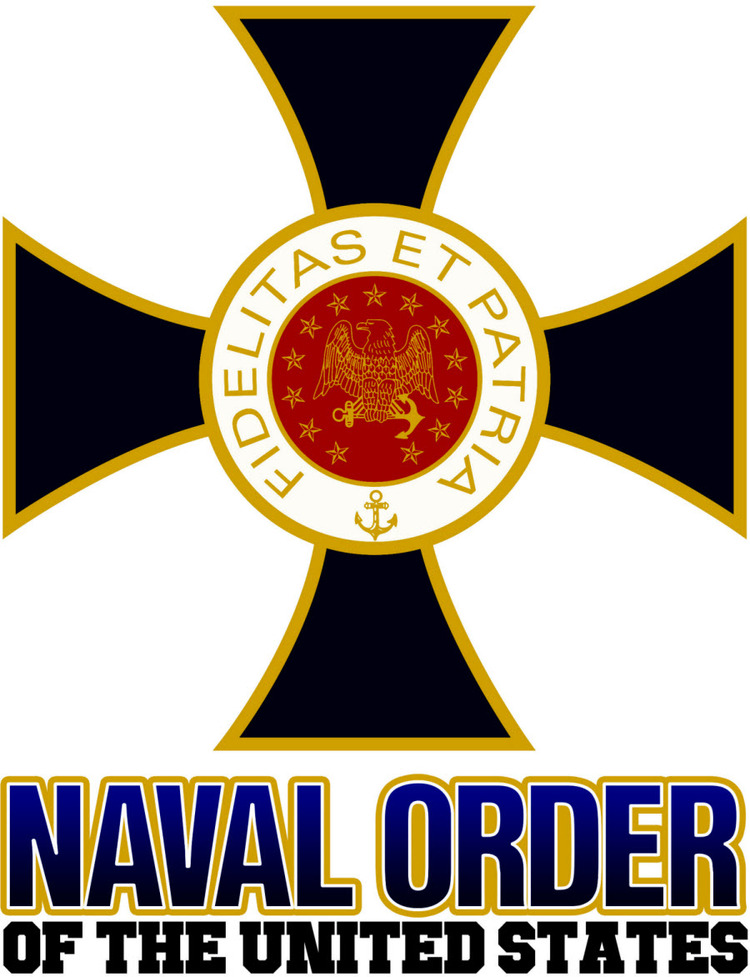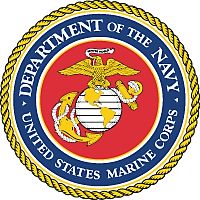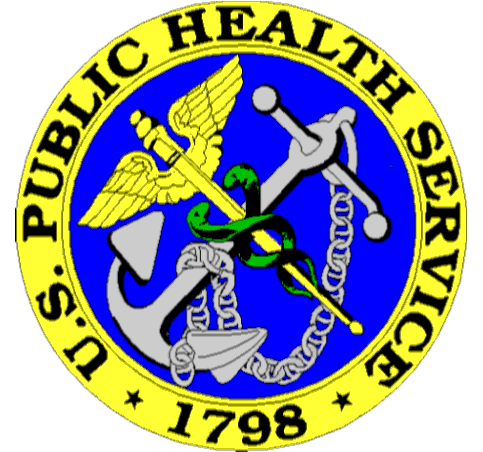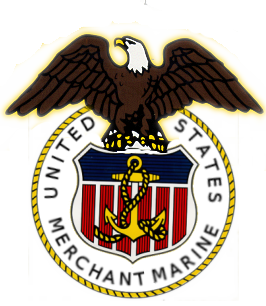by RADM Samuel J. Cox, USN (Ret)
Director of Naval History
Curator of the Navy
Director, Naval History and Heritage Command
75th Anniversary of World War Two
***********************************
Guadalcanal: The Battle of Friday the 13th
"It's suicide," was the reaction of Captain Cassin Young, new commanding officer of the flagship heavy cruiser USS SAN FRANCISCO (CA-38) when informed of his mission. "I know. But we have to do it," responded Rear Admiral Daniel Callaghan, the commander of a force of five cruisers and eight destroyers (Task Group 67.4) assigned the mission to interdict a Japanese task group and prevent a second devastating battleship bombardment of Henderson Field and U.S. Marine positions on Guadalcanal (see H-Gram 011 "All Hell's Eve."). Based on Intelligence reporting, both of them knew what they were up against; battleships. CAPT Young was not the kind to shirk danger; he had been awarded a Medal of Honor for his actions at Pearl Harbor in command of the repair ship USS VESTAL (AR-4) when he was blown off the bridge of his ship by the explosion of USS ARIZONA's (BB-39) magazine alongside, swam through burning oil to get back aboard his sinking ship to get her underway, under fire, and beach her in shallow water. CAPT Young was also right; neither he nor RADM Callaghan, nor RADM Norman Scott, nor the five Sullivan Brothers, nor a total of 1,439 American Sailors would survive the incredibly vicious, chaotic, no-quarter, close-quarters nighttime melee with two Japanese battleships, a light cruiser and eleven destroyers; an action that naval historian RADM Samuel Eliot Morison would describe as being like "minnows in a bucket" and others would describe as a "bar room brawl after the lights had been shot out."
By the time the battle was over, of the 13 U.S. ships engaged, two anti-aircraft cruisers (ATLANTA (CL-51) and JUNEAU (CL-52)) and four destroyers (CUSHING (DD-376,) LAFFEY (DD-459,) BARTON (DD-599,) and MONSSEN (DD-436)) would be sunk. Two heavy cruisers (SAN FRANCISCO and PORTLAND (CA-33)) and two destroyers (STERRET (DD-407) and AARON WARD (DD-483)) were seriously damaged. Only the light cruiser HELENA (CL-50) and destroyers O'BANNON (DD-450) and FLETCHER (DD-445) survived the deluge of battleship shells and "Long Lance" torpedoes with minimal damage or no casualties. The Japanese lost only two destroyers, but one of the two battleships (HIEI) was so badly battered that she could not steer or clear the battle area, and was sunk the next day by U.S. Navy and Marine aircraft, flying from Henderson field and USS ENTERPRISE (CV-6.) Most importantly, Callaghan's force accomplished its mission in preventing a bombardment, and Henderson Field remained operational and played a pivotal role in preventing about 5,000 Japanese reinforcements from reaching the island, and sinking almost all the supplies and ammunition of the 2,000 who did. In conjunction with yet another brutal battle the night of 14-15 Nov, this battle turned the tide of the campaign for Guadalcanal in favor of the U.S., at great cost.
The record of valor displayed by the U.S. Navy in the Battle of Friday the 13th was astounding. RADM Callaghan and RADM Scott were both awarded a posthumous Medal of Honor (Scott was actually killed by "friendly" fire.) Three Medals of Honor were awarded to crew on USS SAN FRANCISCO who fought on after the most senior officers were all killed; Lieutenant Commander Herbert Schonland, LCDR Bruce McCandless, and (posthumously) Boatswains Mate First Class Reinhardt Keppler. The SAN FRANCISCO received a Presidential Unit Citation, as did LAFFEY, STERETT, and O'BANNON. The crew of SAN FRANCISCO alone accounted for 32 Navy Crosses (22 posthumous,) and 21 Silver Stars, and there were more on other ships. The commanding officers of all 13 ships in the battle were awarded a Navy Cross, four posthumously. At least 28 U.S. Navy destroyers and destroyer-escorts were named in honor of those brave Sailors who fell in this most epochal battle in U.S. Navy history (one of these, the USS HARMON (DE-678) was the first warship named in honor of an African-American; Mess Attendant First Class Leonard Roy Harmon, killed on SAN FRANCISCO; and the USS THE SULLIVANS (DD-537 and DDG-68) were named after the five Sullivan brothers, all lost aboard JUNEAU.)
Although RADM Callaghan's courage has never been questioned, the appalling cost of the battle caused many navy leaders at the time, and many historians since then, to question his tactical judgement, in particular his integration (or lack thereof) of newer radar on some of his ships. Some of these criticisms are probably valid, but none really take into account that CAPT Young's assessment (suicide) was valid. The two Japanese battleships (8 x 14" guns each) and 95 powerful torpedoes (not counting re-loads) aboard the destroyers, all superbly trained and equipped for night fighting, had vastly superior throw weight. Callaghan's own ships were never designed or intended to duke it out with battleships, nor could the technology of radar be a panacea for decades of avoidance of realistic night time training (which would be disastrously demonstrated at the Battle of Tassafaronga just two weeks after this battle.) Callaghan's only hope of success was to get as close to the battleships as quickly as possible before opening fire. Whether this was his plan is unknown, because he left no written plan and those who might have known were dead too, but that is what happened. Opening fire sooner only would have given the Japanese battleships more time to find the range before the much lighter U.S. weapons could inflict any serious damage on the more heavily armored battleships, and crossing the Japanese "T" would only have made better targets for Japanese torpedoes. Given the force disparity, there is no realistic outcome in which this battle would have turned out any better for the U.S. with or without more effective use of radar. So, in my assessment, in the face of overwhelming odds, Callaghan chose to attack, and did his duty to the utmost, and in strategic terms, he won.
The words of Major General Arch Vandegrift, United States Marine Corps, commander of all Marine and Army forces on Guadalcanal, perhaps sums it up the best, ".but our greatest homage goes to Scott, Callaghan and their men who with magnificent courage against seemingly hopeless odds drove back the first hostile stroke and made success possible. To them the men of Cactus (Guadalcanal) lift their battered helmets in deepest admiration."
Or perhaps the words of the skipper of USS FLETCHER (DD-445,) CDR William Cole to his XO as FLETCHER (13th ship in line of a group of 13 ships on Friday the 13th, with hull number that added up to 13 and named after Frank Friday Fletcher) entered the battle, "Aren't you glad our wives don't know where we are right now?"
For more of the Battle of Friday the 13th please see attachment H012.1.
LCDR William E. Hank, commanding -- Navy Cross - 2nd Award (Posthumous)
USS Laffey - Lost in Action - Presidential Unit Citation
Navy Art Collection: attachment H012.2. This painting depicts destroyer USS LAFFEY (DD-459) just after she has crossed under the Japanese battleship HIEI's bow and is engaging the battleship with 5", 20mm, and side-arms at near point blank range on 13 Nov 42 off Guadalcanal.
Photo: attachment H012.3. This photo shows the USS SAN FRANCISCO Memorial in San Francisco, California, showing damage to her port bridge wing during the battle off Guadalcanal on 13 Nov 42. The damaged bridgewings were removed after the battle and used to create a memorial to the crew of SAN FRANCISCO.
********************************
Guadalcanal: Battleship vs. Battleship - The Battle of 14-15 Nov 1942
The tide of the Guadalcanal campaign was turned by one new American battleship, the USS WASHINGTON (BB-56,) CAPT Glenn B. Davis, commanding, in a brutal and near-run battle the night of 14-15 Nov 42. With the battleship USS SOUTH DAKOTA (BB-57) on fire and out of action, and the four screening destroyers sunk or crippled, WASHINGTON was the only ship left of Rear Admiral Willis "Ching" Lee's Task Force 64 that entered Ironbottom Sound the evening of 14 Nov 1942, in a last ditch effort by Vice Admiral William F. Halsey to halt yet another major effort by the Japanese to bombard Henderson Field and land more reinforcements on Guadalcanal (it was a last-ditch effort for the Japanese too.) WASHINGTON single-handedly took on a Japanese force of one battleship (KIRISHIMA, a survivor of the 13 Nov battle,) two heavy cruisers, two light cruisers, and nine destroyers. In a matter of minutes, with accurate radar-directed fire, WASHINGTON pummeled the KIRISHIMA with between 9 and 20 hits (probably 20) by 16" shells and over forty hits by 5" shells, which caused KIRISHIMA to sink after midnight. WASHINGTON also hit other Japanese ships with her secondary armament, including probably the destroyer USS PRESTON (DD-379) too. WASHINGTON then maneuvered to avoid multiple torpedo attacks. The loss of the KIRISHIMA caused the rest of the Japanese force to withdraw, with the exception of one sinking destroyer.
RADM Lee was the Navy's foremost flag-level expert on the integration and use of radar, and that knowledge and technology provided the critical edge in turning what could have been a disaster into a decisive victory, that contributed in a major way to ending the last major Japanese push to re-take Guadalcanal. Disillusioned by the Army's inability to make any progress against the U.S. Marines, and stunned by the loss of two battleships, the Japanese Navy decided to limit further action to making Tokyo Express supply runs using destroyers. The Japanese Navy would never again commit cruisers or battleships (or aircraft carriers) to the waters around Guadalcanal.
The action between USS WASHINGTON and IJN KIRISHIMA was the only one-on-one battleship action in the Pacific War, and only one of two battleship vs. battleship actions in the Pacific (the other was the Battle of Surigao Strait in Oct 1944.) Most accounts focus on the fact that the KIRISHIMA was hopelessly outclassed by the WASHINGTON. KIRISHIMA was a World War I-vintage battle-cruiser (which had received some additional armor and upgrades during the interwar years) armed with four twin 14" gun turrets. WASHINGTON (and SOUTH DAKOTA) were both brand new state-of-the-art battleships, armed with three triple 16" gun turrets, the latest radar, and an admiral who knew how to use it. The standard interpretation was that KIRISHIMA didn't have a prayer, and this is arguably true ship-to-ship. However such analysis does not account for the 90 torpedo tubes (plus reloads) aboard the Japanese cruisers and destroyers and the power of the Type 93 Long Lance torpedo, the capabilities of which the U.S. was still largely ignorant. Had the U.S. destroyer screen not absorbed many of these torpedoes, at great sacrifice, and had the Japanese commander not lost situational awareness in the chaos of battle, the outcome could have been disastrous for the U.S. Halsey took an enormous risk, much more than he even knew, in stripping both his battleships from carrier screen duties and committing them to a night battle in constricted waters against so may torpedoes; the outcome could easily have been USS HOUSTON (CA-30) redux at the Battle of Sunda Strait.
As in the Battle of Friday the 13th, the ferocity of the battle was such that every commanding officer of the six U.S. ships involved was awarded a Navy Cross, two posthumously. Total U.S. personnel losses in the battle were 242 KIA and 142 WIA. The destroyers WALKE (DD-416) and PRESTON (DD-379) were immediately smothered and sunk by Japanese torpedoes and shellfire and were lost with most of their crews (80 KIA on Walke, including skipper CDR Thomas E. Fraser, and 117 KIA on Preston, including skipper CDR Max C. Stormes.) The BENHAM (DD-397) and GWIN (DD-433) were both quickly put out of action, but the skipper of BENHAM got all of his crew onto GWIN before BENHAM sank, with only 8 WIA on BENHAM, and 6 KIA on GWIN. The battleship SOUTH DAKOTA (CAPT Thomas L. Gatch commanding) suffered a massive debilitating power failure at a critical point in the battle, ending up silhouetted by the burning U.S. destroyers and taking 27 topside hits, none threatening to the integrity of the ship, but killing 39 crewmen (including one Marine) and wounding 59 more, and putting her out of the battle. Dozens of Japanese torpedoes missed both SOUTH DAKOTA and WASHINGTON. WASHINGTON came through the battle (and the rest of the war) unscathed with no casualties. Given her impact on the course of the Guadalcanal campaign and the war, why WASHINGTON did not receive a Presidential Unit Citation (or even a Navy Unit Citation or Meritorious Unit Commendation) remains a complete mystery to me.
After the battle, WASHINGTON's skipper, CAPT Glenn Davis, made a profound observation, "Radar has forced the Captain or OTC to base a greater part of his actions.on what he is told rather than what he can see." Naval warfare had just been revolutionized.
For more on the Battle of 14-15 Nov, please see attachment H012.4
**************************************
Operation Torch: The Invasion of North Africa
Allied forces invaded French North Africa beginning on 8 Nov 1942. The invasion ultimately landed over 100,000 U.S. and Allied troops at multiple locations in Morocco and Algeria in an effort to relieve pressure on the British in Egypt and the Russians at Stalingrad. The forces required for this invasion was a primary reason why Operation Watchtower (the invasion of Guadalcanal) were perpetually short of ships, aircraft, troops and supplies. Both CNO Ernest J. King and Chief of Army Staff, General George C. Marshall opposed Operation Torch, as a diversion from what they believed should be the main effort (the invasion of France) but were overridden by President Franklin D. Roosevelt out of deference to British Prime Minister Winston Churchill and Soviet dictator Josef Stalin. I will cover more on Operation Torch, particularly the Naval Battle of Casablanca (which included a duel between the battleship USS MASSACHUSETTS (BB-59) and the Vichy French battleship JEAN BART, and resulted in the sinking of multiple French warships that opposed the landing) in the next H-gram
**************************************
Meanwhile, Back in WW I (100th Anniversary)
On 17 November 1917, the destroyers FANNING (DD-37) and NICHOLSON (DD-52) sank the German submarine U-58, the first U-boat sunk by U.S. forces in WWI (and the first submarine ever sunk by U.S. Navy forces, including Confederate States Ship (CSS) HUNLEY.) Of the submarine's 40-member crew, 38 were rescued by the FANNING and became prisoners of war.
On 19 November 1917, the destroyer USS CHAUNCEY (DD-3) was accidentally rammed and sunk by the British Merchant Ship ROSE, 110 miles west of Gibraltar, killing three officers and 18 men.
On 22 November 1917, a Tellier seaplane flown by Ensign Kenneth R. Smith conducted the first armed patrol by a U.S. Navy aircraft in European waters and was forced to ditch while investigating a reported German submarine contact. The two crewmen were rescued two days later.
On 25 November, Battleship Division Nine (USS NEW YORK (BB-34,) USS DELAWARE (BB-28,) USS FLORIDA (BB-30,) and USS WYOMING (BB-32) departed Hampton Roads for Scapa Flow, United Kingdom, the first U.S. battleships to head across the Atlantic to participate in WWI. Due to an acute shortage of oil in the U.K., these battleships are not the newest U.S. battleships, but were the newest that still burned coal, of which the British had plenty.
I will cover more on WW I developments between July and Dec 1917 in the next H-gram.
*********************************************
Sources (and great reading) used for this H-gram include, "Guadalcanal" by Richard Frank. "Neptune's Inferno" by James Hornfischer. "The Conquering Tide" by Ian Toll. "Information at Sea" by CAPT Timothy Wolters, USNR. "Combined Fleet Decoded" by John Prados. "Japanese Destroyer Captain" by Tameichi Hara. "A Dawn Like Thunder: The True Story of Torpedo Squadron Eight" by Robert Mrazek. And of Course, "The Struggle for Guadalcanal" Vol. V. of the History of U.S. Naval Operations in WWII by RADM Samuel Eliot Morison.
Very respectfully,
Sam
Samuel J. Cox
RADM, USN (Retired)
Director of Naval History
Curator of the Navy
Director, Naval History and Heritage Command
202-433-2210 samuel.cox@navy.mil








